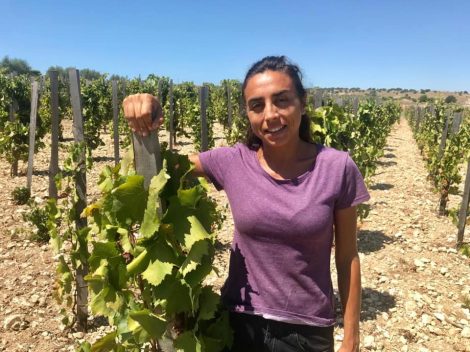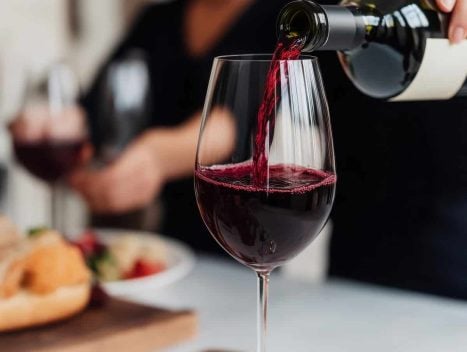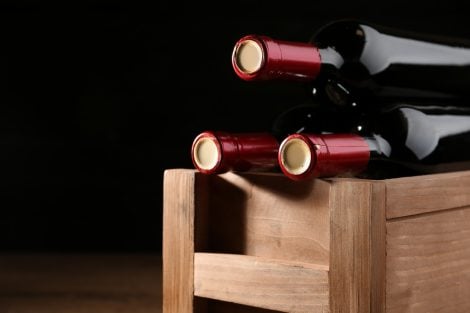It's not yet on sale, but it's ready and available for tasting at Offida, in the Ciù Ciù showroom in Piazza del Popolo, along the "golden serpent" leading to Sant'Agostino (also known as the Church of the Holy Cross). We're talking about the first—so far as we know—mountain Pecorino Metodo Classico, a project by brothers Walter and Massimiliano Bartolomei that aims to return to the roots of the native Piceni grape, Pecorino, which hails from the world of shepherding and transhumance. This label remains within the bounds of experimentation.
Mountain Pecorino
The label of this Mountain Pecorino is already a program: elegant, on a black background with a beautiful graphic reproduction of the traditional spindle used for lace-making, an ancient art that has earned the small town a few kilometres from Ascoli Piceno the nickname Borgo dei Merletti (Village of Lace). The wine is made from grapes grown in the locality of Pomario in the municipality of Acquasanta at around 600 meters above sea level, a terrain named for its past use in fruit cultivation (particularly apples) due to its good sun exposure, which allowed for excellent ripening. It is an organic and biodynamic Metodo Classico, also certified by Demeter. At these altitudes, between the Sibillini and Laga mountains, are the vineyards of Ciù Ciù and the Agriarquata cooperative, whose grapes, grown at about 700 meters above sea level, give rise to an ancestral method sparkling white wine called Piccà. This wine truly harkens back to its origins, when it was bottle-refermented and "piccava" (sparkled), a trait from which the name Pecorino for the grape is believed to derive.
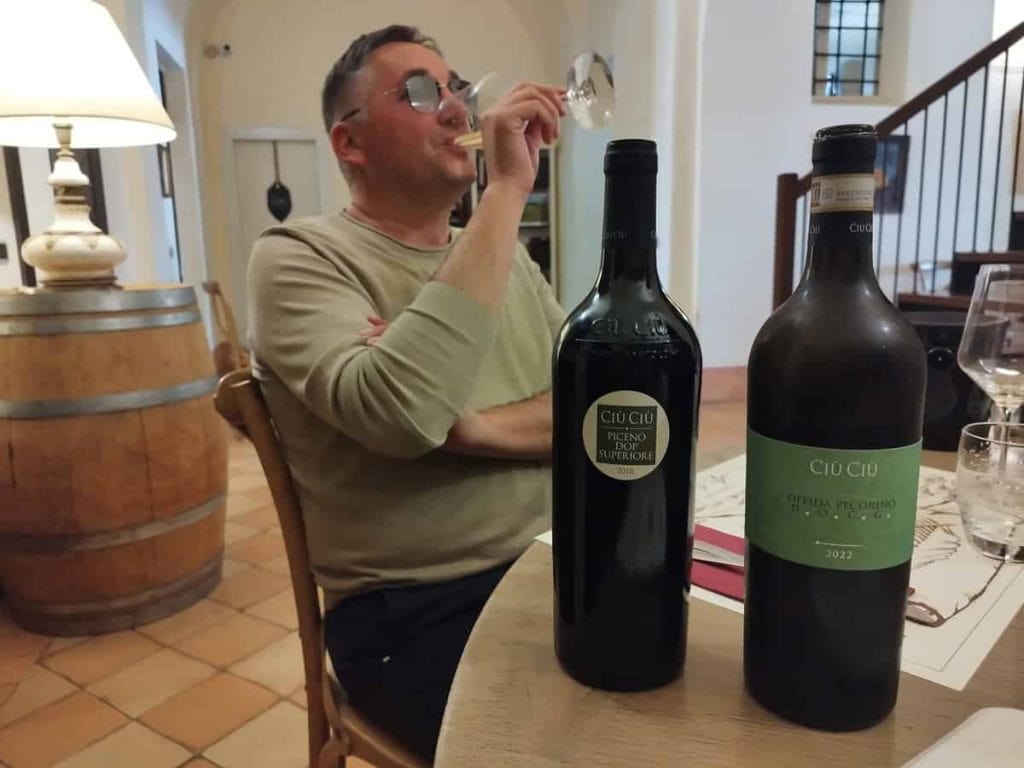
Walter Bartolomei, owner of Ciù Ciù along with his brother Massimiliano: a tasting of the two still wines certified by Demeter.
Back to the roots
"This ancient grape was tied to transhumance, it's a rustic grape," says Walter Bartolomei. "In the years of agro-industry and intensive farming, Pecorino was almost abandoned before being rediscovered by the Cocci Grifoni winery in the 1980s. However, this rediscovery was linked to flatland or mid-hill viticulture, which isn't entirely faithful to the grape's original nature. Pecorino's unique characteristic is its lovely and pronounced acidity, which makes it ideal for sparkling wine production. So, in recent years, projects like ours have flourished, aiming to return to the roots: low yields, heroic viticulture, no chemicals, and a recovery of the original aromas of this ancient and very distinctive wine." Why Metodo Classico and not ancestral? "Because this way we can maximize the grape's characteristics," smiles Walter. And it adds a touch of nobility to a rural grape, we add.
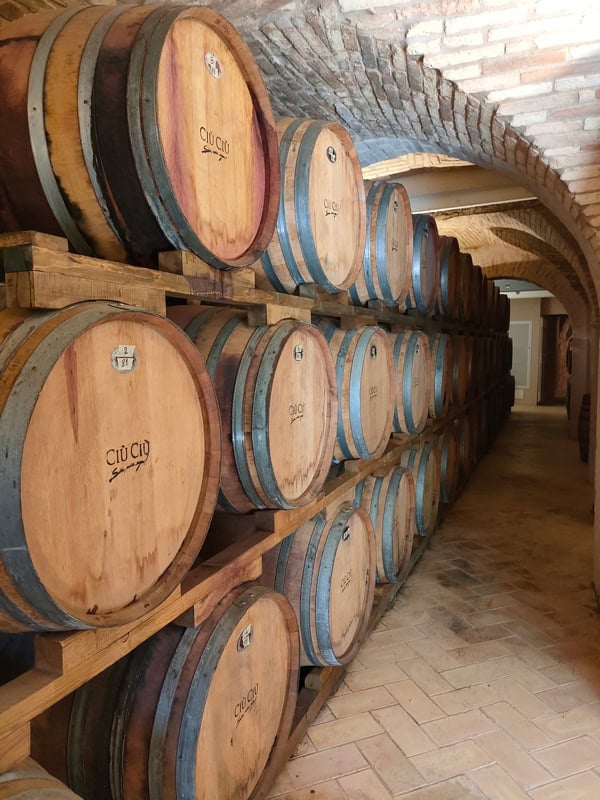
The Ciù Ciù cellar in the Palazzo Mercolini Tinelli cellars in Piazza del Popolo in Offida.
An elegant and rustic wine
The wine shows a nice consistency between nose and mouth: herbal notes and green almond that return to the palate after a nice fruitiness where wildflowers make an appearance. Freshness and acidity are at the forefront for a finish that turns slightly bitter but does not have long persistence. This is how the sommelier who was with us at the tasting describes it: "Fine and persistent bubbles, a nose that's not intense but rather delicate: notes of white fruit, pear, herbal, and dried fruit. On the palate, it is fresh and dry, mineral, with a slightly bitter finish."
In short, a straightforward and pleasant wine that probably needs more time in the bottle after its 36 months on the lees to be appreciated at its best. We tried it quite cold, and as it warmed up a bit, it gained even more character. In summary, a nice bottle: far from Champagne, but also from the more well-known Italian sparkling wine regions (like Franciacorta, Trentodoc, and Oltrepò). A wine that presents itself elegantly without forsaking its inherent rusticity.
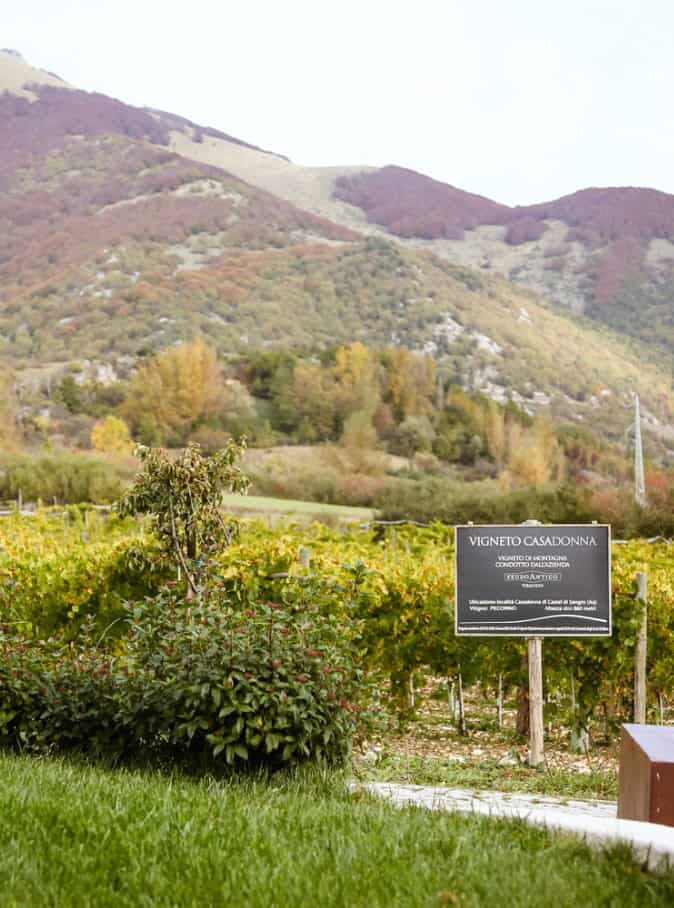
The mountain vineyard of Casadonna in Castel di Sangro, Abruzzo.
The trend: identity and territoriality
This trend of returning to the origins of Pecorino as a grape of shepherding and thus a mountain grape is also demonstrated by the recent production linked to Casadonna by Niko Romito: at 800 meters above sea level, the chef cultivates Pecorino in a 6-hectare vineyard in collaboration with the Feudo Antico winery in Tollo, which oversees the vinification. They produce 2,000 bottles a year of Pecorino IGP Casadonna. Similar to the number of Metodo Classico bottles from Ciù Ciù. These small numbers testify to the growing attention to the wine's identity characteristics, what we might call with the now overused term "storytelling" of a label: a way to give more opportunities and quality to wines that must offer something more than just alcohol content or muscle, elements that seem increasingly less important.
P.S. We tried the Ciù Ciù Metodo Classico Pecorino with Ascolana olives: excellent, capable of cleansing the palate and playing well with both the dry rusticity of the filling and the herbal quality of the olive and the richness of the frying.

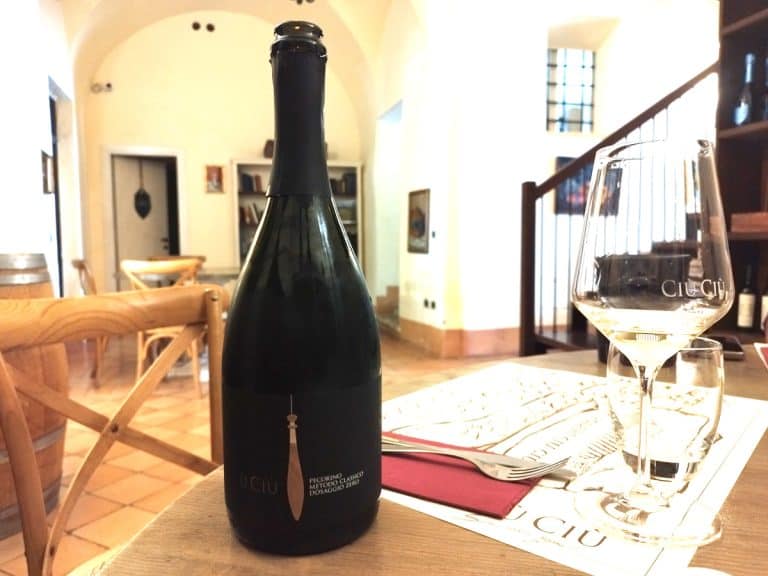
 Fewer bottles, more by-the-glass: how to build the wine list of the future
Fewer bottles, more by-the-glass: how to build the wine list of the future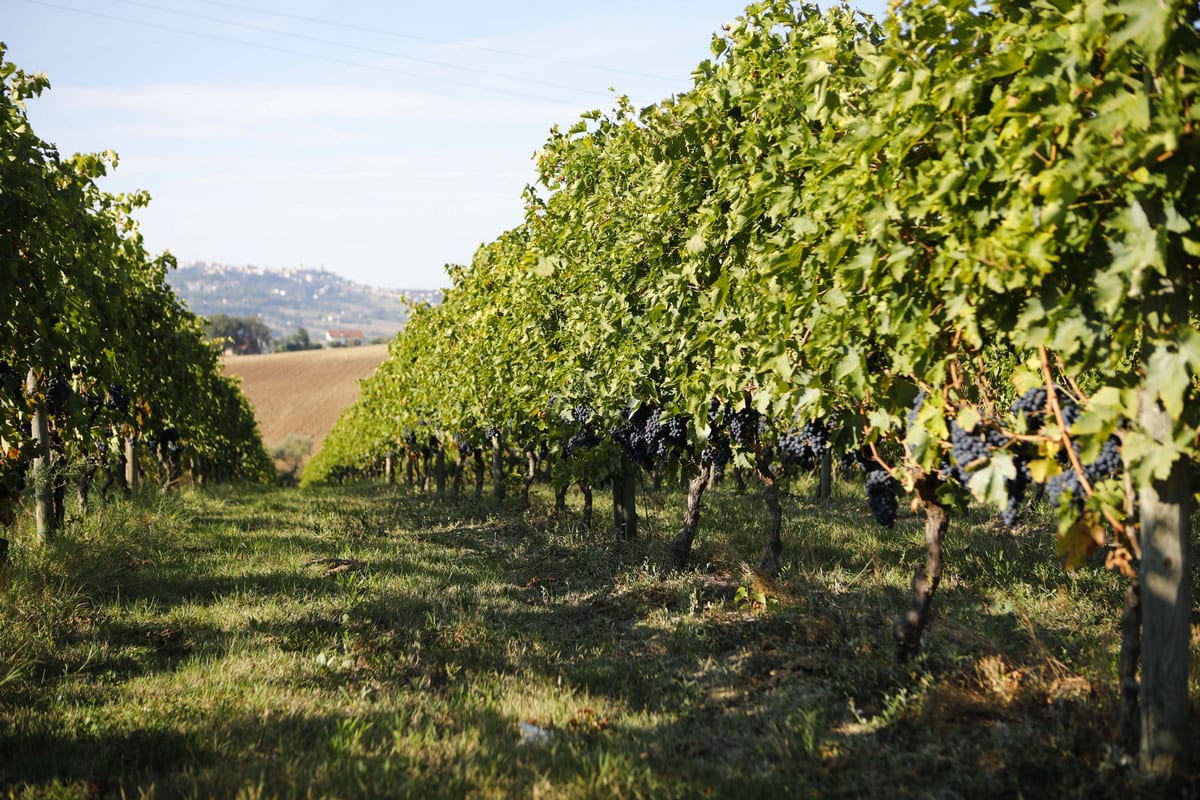 The Moncaro collapse impacts Marche wines. But average price rises
The Moncaro collapse impacts Marche wines. But average price rises Trump’s first trade war cost Americans $27 billion. USDA analysis
Trump’s first trade war cost Americans $27 billion. USDA analysis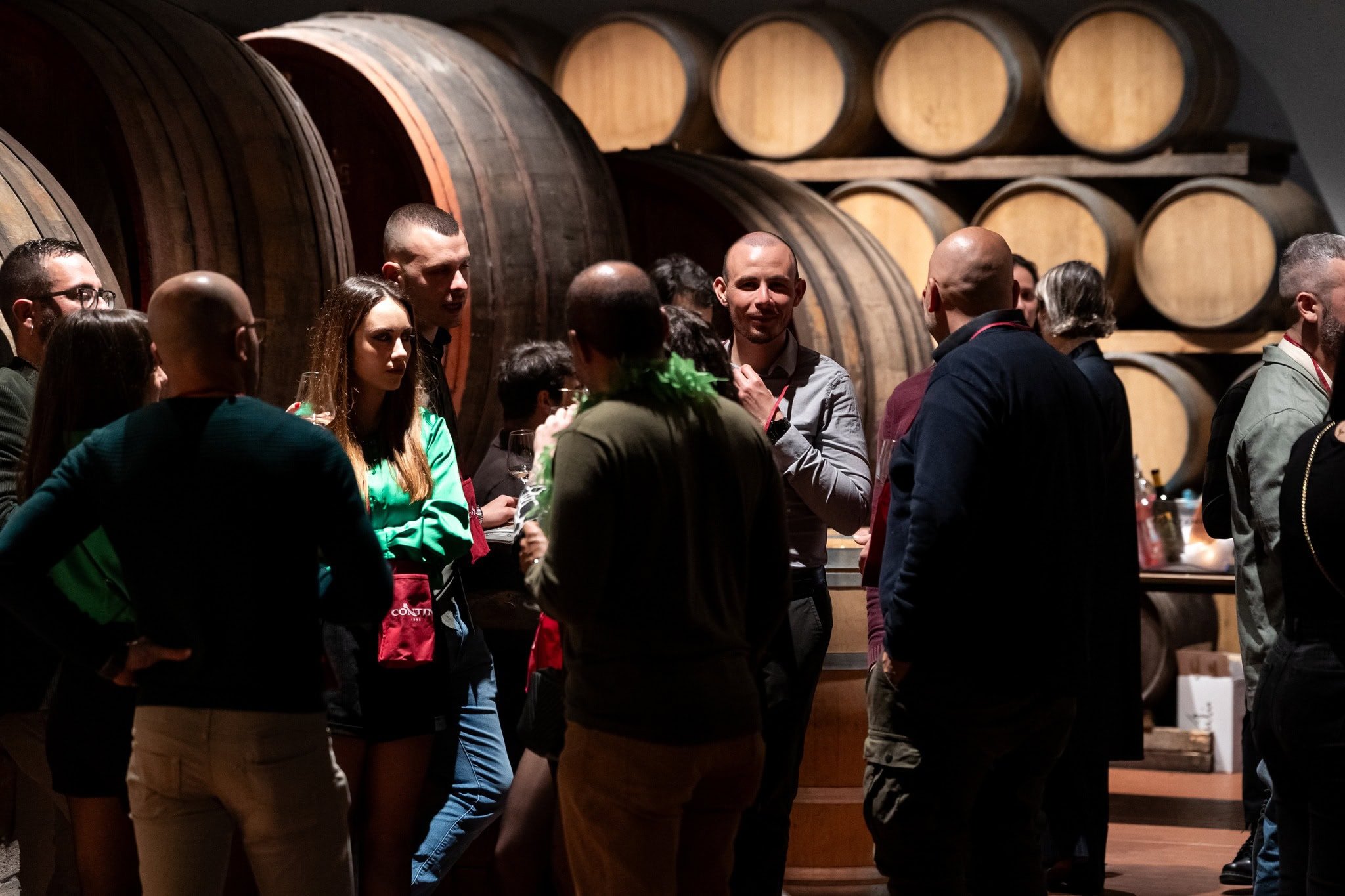 Here are ten Rare Wines you absolutely must try
Here are ten Rare Wines you absolutely must try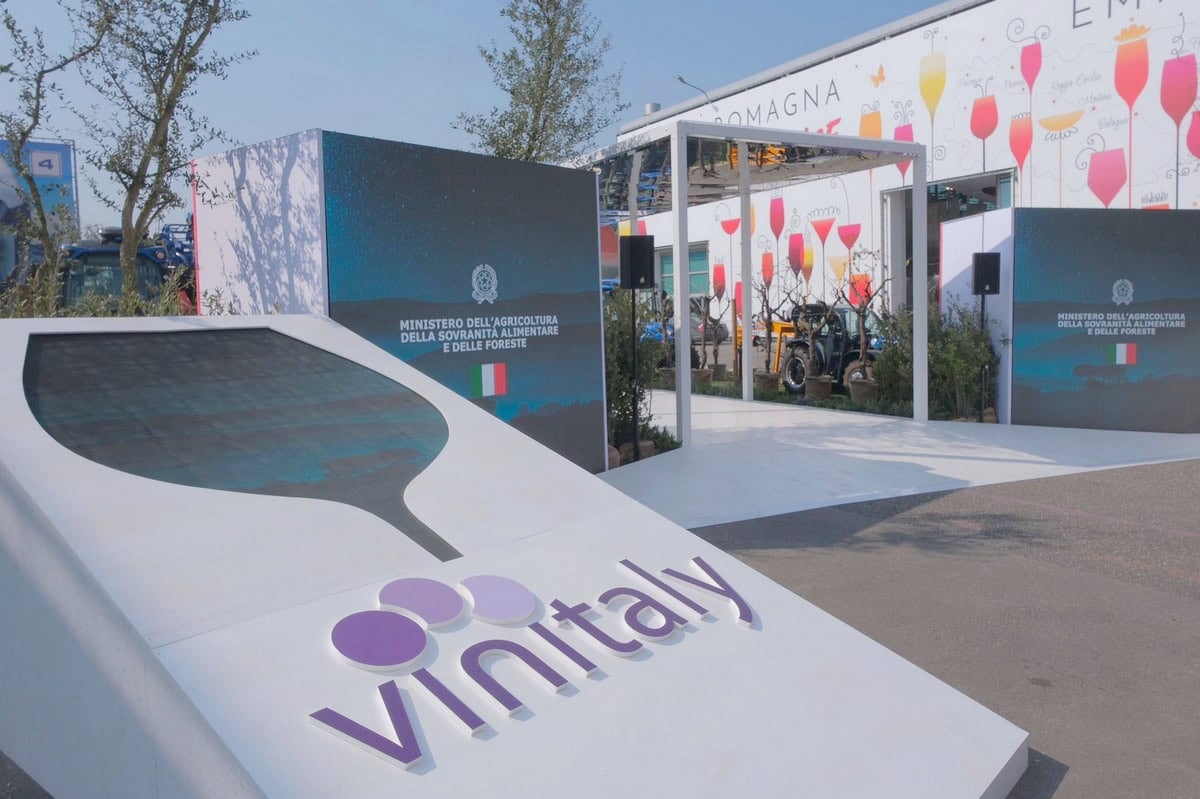 The “Tariff Vinitaly” closes with 97,000 attendees: one third from abroad. See you on 12 April 2026
The “Tariff Vinitaly” closes with 97,000 attendees: one third from abroad. See you on 12 April 2026

